The sustainable harvesting of timber for wood production is an essential practice in the field of wood engineering. This guide aims to provide a comprehensive overview of the principles and techniques involved in ensuring sustainable timber harvesting, with particular emphasis on its importance for promoting environmental conservation and long-term resource availability. By adhering to these practices, wood engineers can not only contribute to the preservation of ecosystems but also enhance the economic viability and durability of their products.
For instance, consider a hypothetical case study where a company specializing in furniture production incorporates sustainable timber harvesting into their operations. By carefully selecting trees based on age, size, and species diversity, they ensure that forest ecosystems are not significantly disrupted or depleted. Additionally, employing responsible logging methods such as selective cutting and reforestation efforts allows them to maintain healthy forests while meeting their raw material requirements. Through implementing sustainability measures throughout the entire supply chain, this company demonstrates how integrating environmentally conscious practices into wood engineering can lead to both ecological benefits and business growth.
In summary, sustainable timber harvesting is crucial for wood engineering professionals seeking to balance resource utilization with ecosystem conservation. This article will explore various aspects related to sustainable timber harvesting, including best practices for tree selection, effective logging techniques, reforestation strategies, and certification systems that promote responsible sourcing.
Understanding Sustainable Timber Harvesting
Sustainable timber harvesting is an essential practice in wood production, ensuring the long-term viability of forests while meeting the global demand for wood products. To illustrate the importance of sustainable timber harvesting, let us consider a hypothetical case study of a forest ecosystem in which unsustainable logging practices were employed. In this scenario, excessive logging led to widespread deforestation and habitat destruction, causing irreparable damage to the local biodiversity and disrupting the delicate ecological balance.
To avoid such detrimental consequences, it is crucial to understand the principles behind sustainable timber harvesting. Firstly, sustainable logging involves selectively removing trees based on predetermined criteria that consider factors such as tree age, size, and species distribution within a given area. By carefully managing these variables, foresters can prevent overexploitation and maintain healthy forest ecosystems.
Secondly, sustainable timber harvesting aims to minimize environmental impacts by employing best management practices (BMPs). These practices include responsible planning and monitoring throughout all stages of the logging process – from pre-harvest assessments to post-harvest restoration efforts. BMPs ensure minimal soil disturbance, protection of water resources through erosion control measures, mitigation of wildlife disruption, and reforestation activities.
Thirdly, sustainable forestry promotes social responsibility by considering the well-being of local communities dependent on forest resources. This includes engaging with stakeholders during decision-making processes regarding harvest plans and implementing fair labor practices in logging operations. Furthermore, sustainable forestry supports economic development through job creation in rural areas reliant on forestry industries.
In summary, understanding sustainable timber harvesting entails adopting selective logging methods supported by best management practices that prioritize ecological integrity while safeguarding social and economic interests. The following section will delve into another critical aspect of sustainable wood production: choosing the right timber species for harvesting.
Choosing the Right Timber Species for Sustainable Harvesting
In the previous section, we explored the concept of sustainable timber harvesting and its significance in ensuring the long-term health and productivity of our forests. Now, let’s delve into another crucial aspect of sustainable wood production: selecting the right timber species for harvesting.
Imagine a scenario where a logging company is deciding which tree species to prioritize for their operations. They have two options – Species A, known for its fast growth rate but low resistance to pests, and Species B, which grows more slowly but exhibits greater resilience against common threats. By carefully considering various factors such as ecological suitability, market demand, and environmental impact, they can make an informed decision that aligns with sustainability goals.
When choosing the right timber species for sustainable harvesting practices, it is essential to consider several key aspects:
- Ecological Adaptability: Different tree species thrive under varying climatic conditions and soil types. It is crucial to select species that are well-suited to the local environment to ensure healthy growth and minimal ecological disruption.
- Market Demand: Understanding market trends and demands is vital when determining which timber species will yield profitable returns while maintaining sustainability. Balancing supply and demand helps prevent overexploitation of popular or high-value tree species.
- Resistance to Pests and Diseases: Some tree species possess natural defense mechanisms against common pests and diseases prevalent in certain regions. Choosing resilient species can reduce the need for excessive pesticide use or disease management efforts.
- Growth Rate: The growth rate of a particular timber species directly affects its harvest cycle duration. Opting for moderately fast-growing trees ensures a steady supply of wood without depleting resources too quickly.
To provide further insight into how different timber species exhibit these characteristics, refer to the following comparison table:
| Timber Species | Ecological Adaptability | Market Demand | Pest & Disease Resistance | Growth Rate |
|---|---|---|---|---|
| Species A | Moderate | High | Low | Fast |
| Species B | Excellent | Moderate | High | Slow to moderate |
This table highlights the potential trade-offs between ecological adaptability, market demand, pest and disease resistance, and growth rate when selecting timber species for sustainable harvesting practices. By carefully weighing these factors in decision-making processes, we can ensure a more resilient and environmentally conscious approach to wood production.
In the subsequent section, we will explore the importance of forest management plans in maintaining sustainable timber harvesting practices while preserving the overall health of our forests. The implementation of effective management strategies is crucial for balancing economic interests with long-term environmental sustainability.
The Importance of Forest Management Plans
Timber harvesting plays a crucial role in meeting society’s demand for wood products while ensuring the long-term sustainability of forests. However, it is essential to understand the impact that timber harvesting practices can have on ecosystems. This section explores the environmental considerations associated with sustainable timber harvesting and emphasizes the need for responsible forest management.
To illustrate these concepts, let us consider an example where a logging operation focuses solely on maximizing timber yield without considering ecological factors. In this hypothetical scenario, excessive removal of certain tree species leads to imbalances in the ecosystem. As a result, wildlife dependent on those trees for habitat or food sources may suffer population declines, disrupting their natural behavior patterns and potentially causing cascading effects throughout the entire ecosystem.
When engaging in sustainable timber harvesting practices, several key aspects should be considered:
- Biodiversity Conservation:
- Preserve intact habitats within harvested areas.
- Promote diversity by replanting native tree species.
- Protect rare and endangered species from exploitation.
- Implement measures to reduce non-target impacts like soil erosion.
The table below highlights some potential positive and negative impacts of different timber harvesting methods on biodiversity conservation:
| Timber Harvesting Method | Positive Impacts | Negative Impacts |
|---|---|---|
| Selective Logging | Maintains habitat structure | Potential damage to residual trees |
| Clear-cutting | Creates new openings for early successional | Loss of mature forest characteristics |
| species | ||
| Shelterwood | Provides continuous cover during regeneration | Can temporarily disrupt visual aesthetics |
Implementing sustainable timber harvesting practices not only benefits ecosystems but also ensures economic viability over the long term. By maintaining healthy forests through proper forest management plans and monitoring activities, landowners and timber companies can ensure a stable supply of wood while safeguarding the integrity of forest ecosystems.
Moving forward, it is essential to understand how these sustainable practices are implemented on the ground. The next section will delve into the strategies and best practices for timber harvesting that promote both environmental sustainability and economic prosperity.
Implementing Best Practices for Timber Harvesting
Having understood the importance of forest management plans, it is crucial to delve into the implementation of best practices for timber harvesting. To illustrate this, let us consider a hypothetical case study where a logging company in Northern California successfully implemented sustainable timber harvesting techniques.
Case Study Example:
In Northern California, XYZ Logging Company has been implementing best practices for timber harvesting to ensure sustainable wood production. By adhering to these practices, they have not only enhanced their operational efficiency but also minimized environmental impacts. This serves as an excellent example of how responsible timber harvesting can be achieved through proper planning and execution.
Best Practices for Timber Harvesting:
-
Selective Cutting Techniques:
- Use selective cutting methods such as single-tree selection or group selection.
- Maintain diversity by leaving behind trees of various sizes and species.
- Promote natural regeneration by ensuring sufficient seed sources remain.
-
Proper Road Construction and Maintenance:
- Construct roads that minimize soil disturbance and erosion.
- Regularly maintain roads to prevent sediment runoff into nearby waterways.
- Utilize Best Management Practices (BMPs) for road construction and maintenance.
-
Effective Waste Management:
- Develop strategies to reduce waste from felled trees during harvesting operations.
- Explore opportunities for utilizing residual materials efficiently (e.g., biomass energy generation).
- Follow guidelines for disposal of waste products without causing harm to the environment.
-
Monitoring and Adaptive Management:
- Continuously monitor the impact of harvesting activities on biodiversity and ecosystem health.
- Employ adaptive management principles to adjust practices based on monitoring results.
- Collaborate with stakeholders including scientists, foresters, and local communities to gather diverse perspectives.
Table: Comparison of Sustainable Timber Harvesting Practices
| Practice | Benefits | Challenges |
|---|---|---|
| Selective Cutting | Preserves ecosystem diversity | Requires skilled forestry knowledge |
| Proper Road Construction | Minimizes soil erosion | Initial investment and maintenance |
| Effective Waste Management | Reduces environmental footprint | Finding economically viable options |
| Monitoring and Adaptive | Ensures long-term sustainability | Requires continuous effort |
By implementing these best practices, logging companies can move closer to sustainable timber harvesting. The next section will focus on minimizing the environmental impacts of timber harvesting operations, highlighting strategies that further enhance responsible forest management.
Minimizing Environmental Impacts in Timber Harvesting
Section Title: Minimizing Environmental Impacts in Timber Harvesting
Example Case Study: In a remote forested area, a timber company aims to harvest a large plot of land while minimizing its ecological footprint. Employing environmentally conscious methods, they carefully plan their operations to protect biodiversity hotspots and maintain ecosystem integrity. Through selective logging practices and reforestation efforts, they strive to mitigate any adverse effects on local flora and fauna.
To achieve sustainable timber harvesting with minimal environmental impact, several key considerations should be taken into account:
-
Prioritize Biodiversity Conservation: Identify areas of high biodiversity value within the designated harvesting site and develop measures to protect them. This may involve creating buffer zones or establishing wildlife corridors to minimize habitat fragmentation.
-
Implement Erosion Control Measures: Safeguard soil quality by incorporating erosion control techniques such as contour plowing, terracing, or mulching. These practices help prevent soil degradation, reduce sedimentation in water bodies, and maintain overall ecosystem health.
-
Promote Forest Regeneration: Adopt silvicultural practices that facilitate natural regeneration processes after timber extraction. This involves ensuring adequate seed dispersal and encouraging the growth of indigenous tree species through appropriate spacing and thinning techniques.
-
Reduce Carbon Footprint: Embrace technologies that minimize greenhouse gas emissions associated with timber harvesting activities. Utilize low-impact machinery powered by renewable energy sources whenever possible and explore innovative transportation methods aimed at reducing fuel consumption.
By adhering to these principles and considering other context-specific guidelines established by regulatory authorities and scientific research findings, it is possible to sustainably extract wood resources without jeopardizing long-term environmental integrity.
With a comprehensive understanding of best practices for timber harvesting and strategies to minimize ecological impacts, the next section will explore measures aimed at ensuring long-term sustainability in wood production.
Ensuring Long-Term Sustainability in Wood Production
Section H2: Ensuring Long-Term Sustainability in Wood Production
Building upon the strategies discussed to minimize environmental impacts during timber harvesting, it is imperative to focus on ensuring long-term sustainability in wood production. By implementing responsible practices and prioritizing ecological balance, we can safeguard our forests for future generations.
To illustrate the importance of sustainable wood production, let us consider a hypothetical scenario where a logging company neglects sustainable practices in their operations. They clear-cut large portions of an old-growth forest, resulting in habitat destruction and loss of biodiversity. The negative consequences extend beyond immediate environmental concerns; communities relying on these forests for livelihood are impacted, and the availability of high-quality timber diminishes over time. To avoid such detrimental outcomes, it is crucial to adopt sustainable approaches that promote both economic prosperity and environmental stewardship.
Strategies for Long-Term Sustainability:
- Ecosystem-based Management: Implementing ecosystem-based management allows for a holistic approach that considers the entire forest ecosystem rather than focusing solely on timber extraction. This involves maintaining natural habitats within logging areas, protecting sensitive species, and encouraging natural regeneration processes.
- Selective Harvesting Techniques: Adopting selective harvesting techniques minimizes unnecessary tree felling by targeting specific trees based on size, age, or other predetermined criteria. This method preserves healthy stands while allowing younger trees to mature naturally.
- Reforestation Initiatives: Investing in reforestation efforts ensures that harvested areas are replenished with new trees. By planting a diverse range of indigenous species suitable for local conditions, we can restore ecosystems more effectively and enhance overall resilience.
- Collaboration between Stakeholders: Open communication channels among government agencies, industry representatives, scientists, and local communities facilitate collaborative decision-making processes. Engaging all stakeholders helps ensure that regulations align with conservation goals while addressing socio-economic needs.
Table: Environmental Benefits of Sustainable Wood Production
| Environmental Benefit | Description |
|---|---|
| Biodiversity Conservation | Sustainable wood production practices help maintain habitat diversity, supporting various plant and animal species. |
| Carbon Sequestration | Forests act as carbon sinks, absorbing significant amounts of atmospheric CO2. By practicing sustainable forestry, we can enhance this process and mitigate climate change impacts. |
| Soil Health Protection | Responsible logging techniques minimize soil disturbance, preserving its fertility for future tree growth and preventing erosion. |
| Water Quality Preservation | Proper forest management reduces the risk of sedimentation in water bodies, maintaining water quality and protecting aquatic ecosystems. |
In conclusion, long-term sustainability in wood production is vital to preserve our forests’ ecological integrity while meeting society’s growing demand for timber products. Through ecosystem-based management approaches, selective harvesting techniques, reforestation initiatives, and stakeholder collaboration, we can strike a balance between economic development and environmental conservation. By embracing these strategies, we pave the way towards a future where sustainable timber harvesting becomes the norm rather than an exception.
[End of section H2]

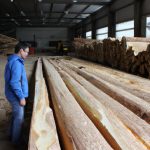

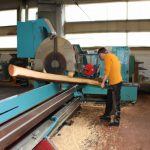


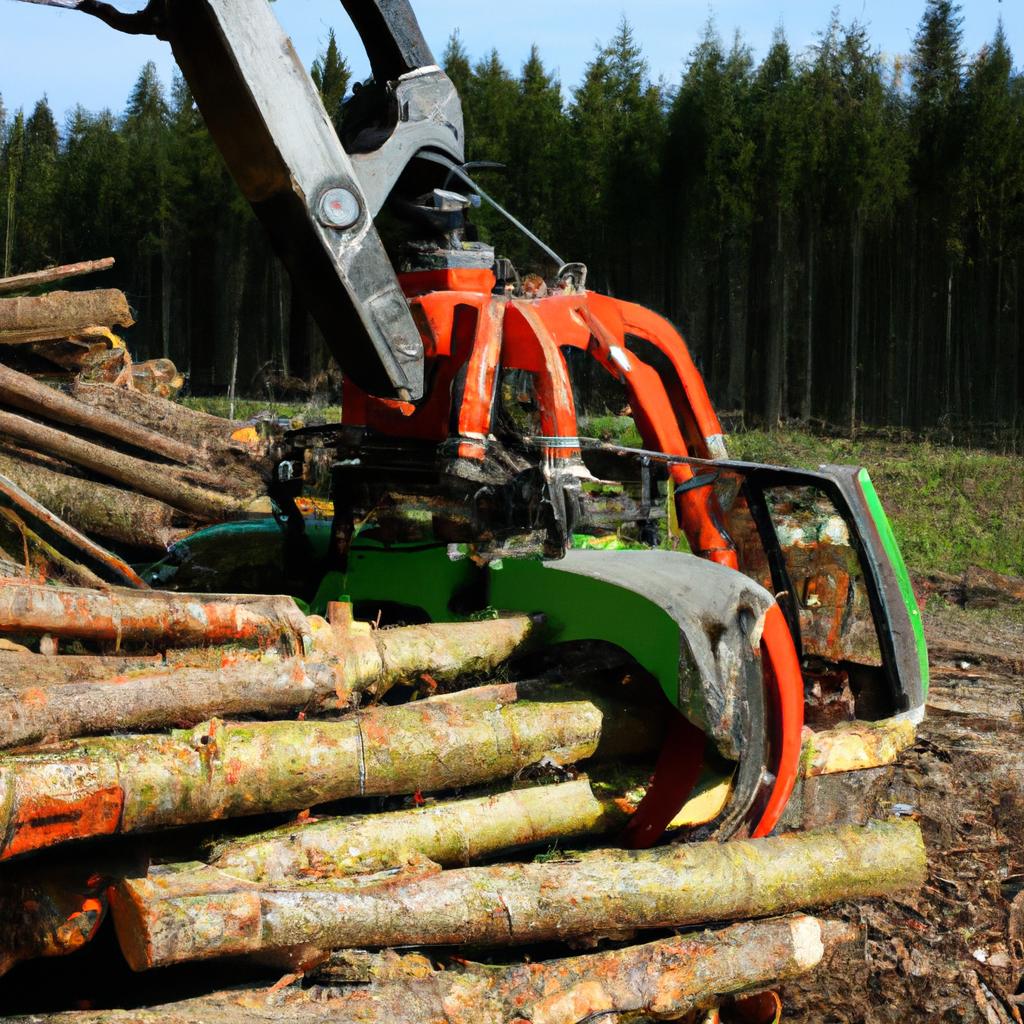
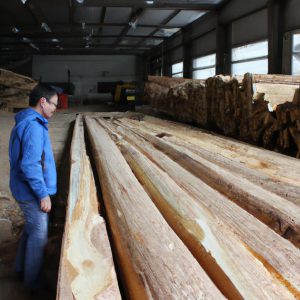
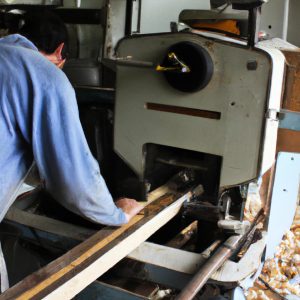
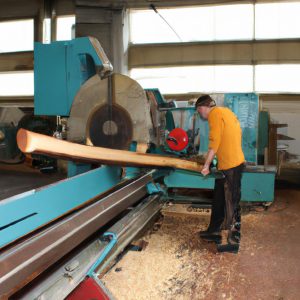
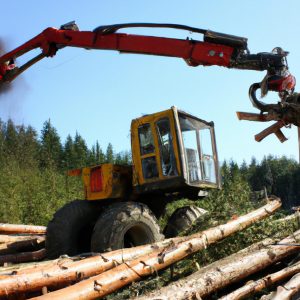
More Stories
Wood Moisture Content Control: A Key Element in Wood Production: Wood Engineering
Timber Framing: Wood Production and Engineering
Wood Engineering: Optimizing Wood Production Efficiency